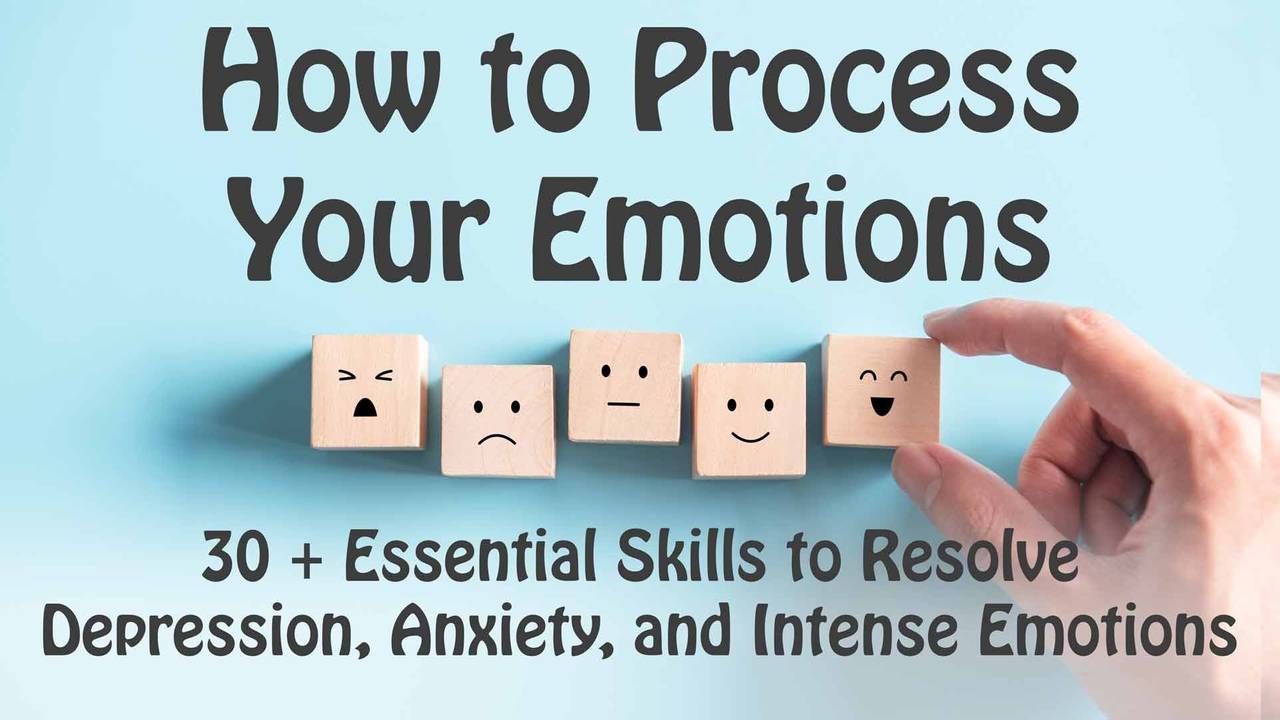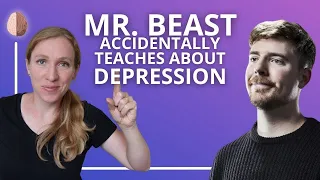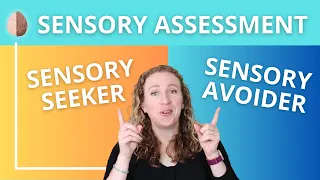This post is part two of our discussion on cognitive distortions. If you haven’t already, go back and read part one, where I cover the 10 common cognitive distortions. Cognitive distortions happen when our thinking gets twisted or exaggerated. But most of the time we don’t notice that we’re thinking this way. It often feels true, so we just go with it. Cognitive distortions make us feel more sad, anxious, depressed, or ashamed because we end up believing something that isn’t necessarily true. Learning to recognize the 10 common cognitive distortions is the first step to change how you think. In this post, you’re going to learn how to challenge and replace those distorted thoughts. Change how you think so you can change how you feel.
This post is part two of our discussion on cognitive distortions. If you haven’t already, go back and read part one where I cover the 10 common cognitive distortions.
So just as a refresher, cognitive distortions happen when our thinking gets twisted or exaggerated. But most of the time we don’t notice that we’re thinking this way. It often feels true, so we just go with it. Cognitive distortions make us feel more sad, anxious, depressed, or ashamed because we end up believing something that isn’t necessarily true.
Learning to recognize the 10 common cognitive distortions is the first step to gaining some power over the cognitive distortion in your life. In this post you’re going to learn how to challenge and replace those distorted thoughts, how to change how you think so you can change how you feel.
But before we jump into that, we need to talk about the “benefits” of distorted thinking.
What Are the “Benefits” of Negative Thinking?
Everyone says “Be positive,” but almost everyone spends some time thinking negatively. Why is that? Distorted thinking screws us over in the long run, but we do it because in the short term it has some benefits.
First Benefit
Negative thinking is comfortable. Have you ever heard someone say “I’d rather expect to fail and be pleasantly surprised than expect to succeed and be disappointed”? Negative thinking is just another subtle way to attempt to avoid pain. We seek to protect ourselves from disappointment by expecting the worst or labeling ourselves as broken.
Let me give you an example. Let’s start with the first cognitive distortion, all-or-nothing thinking.
James really wants to get a better job. He knows that to do this he needs to write a good resume. He works the evening shift so he has a lot of time in the day to do it, but each day he starts off by watching a lot of gaming videos on YouTube.
When his morning is over, he thinks “I should work on my resume.” But now he only has two hours before work, and he still has to shower and get ready.
He thinks “I’ve completely wasted my morning. My whole day is ruined. Why try? It’s not worth the effort.”
Now that he’s convinced himself that it’s pointless to put in effort, he’s also excused himself from doing the hard work of figuring out his resume. His all-or-nothing thinking protects him from feeling like he needs to work, but it also leaves him feeling depressed.
If you look carefully at each type of cognitive distortion, you’ll see that it does something for you. Distorted thinking helps us avoid responsibility, prevent risk, or try not to feel so vulnerable. This is called a secondary gain. We don’t notice that we’re doing it, but it does something for us.
Cognitive distortions may make you feel vindicated, but in the long run, thinking this way leaves you miserable.
Second Benefit
Distorted thinking is easy. It takes little effort. Maybe we learned to think this way from a parent or we developed this thinking to cope with stressors.
But when this type of thinking is habitual, it changes from a defense mechanism to a paradigm. The whole way we see the world becomes distorted, leading to depression, anxiety, anger, loneliness, and unachieved dreams. Again, short-term avoidance leads to long-term suffering.
The side benefits we get from negative thinking make it hard to let go of. It’s often not helpful to say “Just be positive” because people just don’t believe, or don’t want to risk believing, the positive thoughts.
If we want to overcome distorted or negative thinking, we have to recognize our thinking, explore what it does for us, and replace it with more truthful or helpful thinking.
In the last post I challenged you to identify which type of cognitive distortions you use. In this section I want you to write about how thinking that way serves to protect you or if it’s used as an avoidant.
How Do You Change Your Distorted Thoughts?
Now that you’ve identified what you get out of distorted thinking, let’s explore how to change it. I have bonus videos on four of these cognitive distortions on my YouTube channel, so feel free to check those out, but I’ll demonstrate the steps with an example from my client James.
Think about a recent time you got really emotional, or use this activity the next time you do.
We’ll use James’ example again to look for these distortions and get started changing them.
One of the running themes in James’ thinking was that he is a loser, a failure, that he’s never going to be successful or be able to achieve his dream of becoming a pilot. He tells himself “I’m such a loser. I’m never going to amount to anything. I fail at everything.”
So let’s take a look at the steps you can take to change your thoughts.
1. Notice and Name
Learn to identify how you think. Because we don’t know we’re thinking falsely, it’s really helpful to get the help of a therapist or a friend or to write down how you’re thinking about a situation.
So in therapy, I would help James identify the CD’s in his thinking. When he says “My life will always be a failure,” he’s catastrophizing. When he says “I’m such a loser,” he’s labeling himself. When he says “I fail at everything”-he’s thinking in black and white.
2. Check for Distortions
For example, start to catch yourself when you say words like “always” or “never” or when you’re making assumptions, and say “That’s black-and-white thinking.”
In therapy I help James notice each time he says “always” and “never.” As James starts to notice himself talking this way, over the course of a couples session he would catch himself. Instead of saying “I fail at everything,” he starts saying “I messed up that job interview, but maybe the next one will go better” or “At least I have more opportunities to interview for other jobs.”
3. Explore
What does this thought do for you? Is there any benefit? Does this thought give you a sense of control? Does it help you avoid taking responsibility or protect you from feeling vulnerable?
James was able to see that most of his distorted thinking just helped him stop trying. It excused him from putting in effort to go to a trade school or work on his resume, and it gave him an excuse to spend more time gaming.
When James was able to see how his mind was distorting things, it made him mad. Now he was motivated to do something different.
4. Challenge the Thought
If you told this thought to your kindest, most reasonable, most rational friend or family member, what would they say to you about this thought?
What would you tell a friend if they had this thought (to help them)? Are there some other ways of seeing this problem?
Try reframing your thinking. That means looking at the problem from a different perspective.
Look for exceptions. Is your statement partially wrong? Or is your way of thinking possibly false in at least one situation?
Try to see both sides of the situation. People are usually a mixture of good and bad, and situations have pros and cons.
Watch for extreme wording and try to be precise instead. So instead of saying “You never take out the trash.” say “You did not take out the trash today; this is becoming a pattern.”
How would your life be different if you stopped believing that thought?
Try thinking the opposite for just a second. What action would that motivate if you did believe the opposite?
5. Choose
Out of all the ways you could think about a situation, which one is going to be most helpful for you? If you were to be more truthful, hopeful, or vulnerable what would you think, say, or do differently?
When James would tell himself that he was a failure and that his life was hopeless, we started to challenge that thinking. James started to think differently.
Instead of saying “Everything is hopeless,” he would say “What can I learn from this? Instead of saying “I’m a failure,” he would say “I can create new opportunities little by little by doing small changes every day.” Instead of saying “I hate my job,” he would say “I can find joy outside of work.”
He learned to focus on progress, not perfection. He’d say “Just because I haven’t found the success I want yet doesn’t mean I never will. I’m going to keep trying until I get there.”
After a while James was feeling a little more motivated. He started doing one small thing each day to improve his life — exercising a little, looking for a better job, working on his resume.
Before long, he had left his job at the restaurant and had gotten trained to be a commercial truck driver. This job paid a little more and also freed him up to take courses that he could listen to while he drove. He started to learn about money management, saved up his paychecks, and paid off his debt. He took courses on how to have better relationships and other topics to improve his life.
At this point, he’s starting to feel even more optimistic about the future, and he doesn’t struggle with depression as much as he did before.
You really can learn to change how you feel by changing how you think. It starts with just these little baby steps — noticing how you think, identifying if it’s distorted thinking, challenging your thoughts, looking for different ways to think, and then choosing which type of thought is going to help you the most.
Use the steps in this post to practice CBT on yourself, and start getting your life headed in a more positive and empowered direction.





